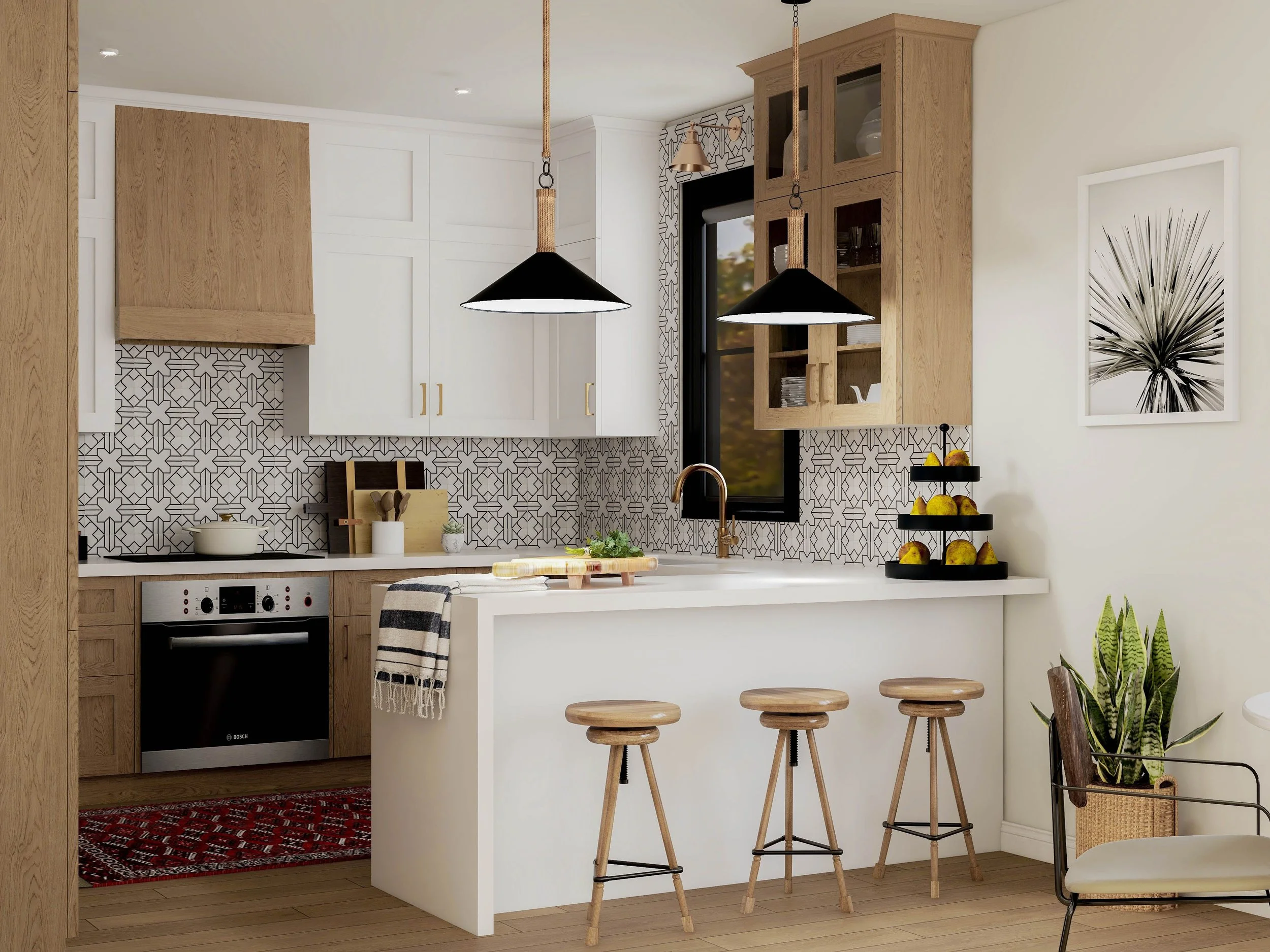Joshua's Design Tips on Selecting Flooring For Your Home
Choosing flooring for your home is an important decision that can have a significant impact on the overall look, feel, and functionality of your living space. Naturally, I work with many of my e-design clients to select flooring that works best for their homes and their budget. There’s a lot to consider since it can be a significant investment, so I hope this helpful to help organize your thoughts and think through all the aspects of what is going to be a great flooring solution for you.
Natural Oak Hardwood Flooring. Image created using AI via Canva
Consider Your Lifestyle and Needs
Think about your lifestyle and the specific needs of your household. Do you have pets or young children? Perhaps you need a flooring solution that is helpful and can minimize impact for someone that might be prone to falling. Are you looking for low-maintenance options? Different flooring materials have varying durability, resistance to stains and scratches, and maintenance requirements. Consider these needs and factors when making your choice.
White washed oak hardwood flooring. Image created using AI via Canva
Assess the Room's Function
The function of the room should guide your flooring selection. High-traffic areas like hallways and living rooms may require more durable options, such as hardwood or laminate. You still can add rugs to add personal touches and make it look stylish with color and texture while working with neutral flooring. For moisture-prone areas like bathrooms or kitchens, water-resistant materials like ceramic tiles, vinyl, or luxury vinyl planks (LVP) could be suitable. If you have a space, like a basement, that is prone to flooding, you would want to get either tile or vinyl to help you minimize the cost and clean up from the potential damages.
Checkerboard tile flooring. Image created using AI via Canva
Consider Aesthetics and Style
Flooring is a prominent design element, so consider the overall aesthetics and style of your home. Look for flooring options that complement your existing décor, furniture, and color schemes. Consider factors like the size of the room and the amount of natural light it receives. Lighter flooring can make a room appear more spacious and bright & airy, while darker flooring can add warmth and coziness. Also, keep in mind, some types of flooring only work with some specific design styles while other types of floorings can work with many different design styles.
Tile flooring. Image created using AI via Canva
Explore Different Materials
Research and explore various flooring materials to determine which ones align with your preferences and budget. Common options include hardwood, laminate, vinyl, tile (ceramic, porcelain, or natural stone), carpet, and engineered wood. Each material has its own unique characteristics, pros, and cons, so weigh them against your specific needs and preferences. It is important to note that if you’re planning to sell your home in the near future, you would want to stick with neutral flooring that would appeal to a variety of homebuyers.
Herringbone hardwood flooring. Image created using AI via Canva
Budget Considerations
Set a budget for your flooring project and consider the costs associated with different materials, installation, and maintenance. Keep in mind that while some materials may have a higher upfront cost, they could provide better long-term durability and value. If you decide to go with a less expensive option because of initial out of pocket costs, make sure you understand the costs to replace parts or all of the flooring in case of damage as well as the impact on your overall home value and appeal to potential buyers if you’re looking to sell at some point in the near future. If you plan on staying in your home for a long while, it might be worth spending a little more now versus the hassle and disruption of replacing it if you go with short lifespan flooring or one that is prone to damage.
Concrete flooring. Image created using AI via Canva
Sample and Test
Before making a final decision, obtain samples of your preferred flooring materials. Place them in the room and observe how they look under different lighting conditions(both natural and artificial lightings) and alongside your existing furniture. If you’re doing a home remodel project, place the samples next to other finishes plus the paint colors you plan to have for your home and see how they look with everything else. Consider factors like texture, noise level, and comfort underfoot. If possible, walk on the samples to get a feel for their texture and durability.
Vinyl flooring. Image created using AI via Canva
Seek Professional Advice
If you're unsure about the best flooring option for your home or need further guidance, consult with flooring professionals or me. I can provide valuable insights and recommendations based on your specific requirements and preferences. We can also provide 2D or 3D renderings to help you envision your space with any flooring option you’re considering.
Remember, choosing the right flooring involves a balance between functionality, aesthetics, and budget. Take your time, do thorough research, and consider all relevant factors to ensure you make an informed decision that will enhance your home for years to come.









